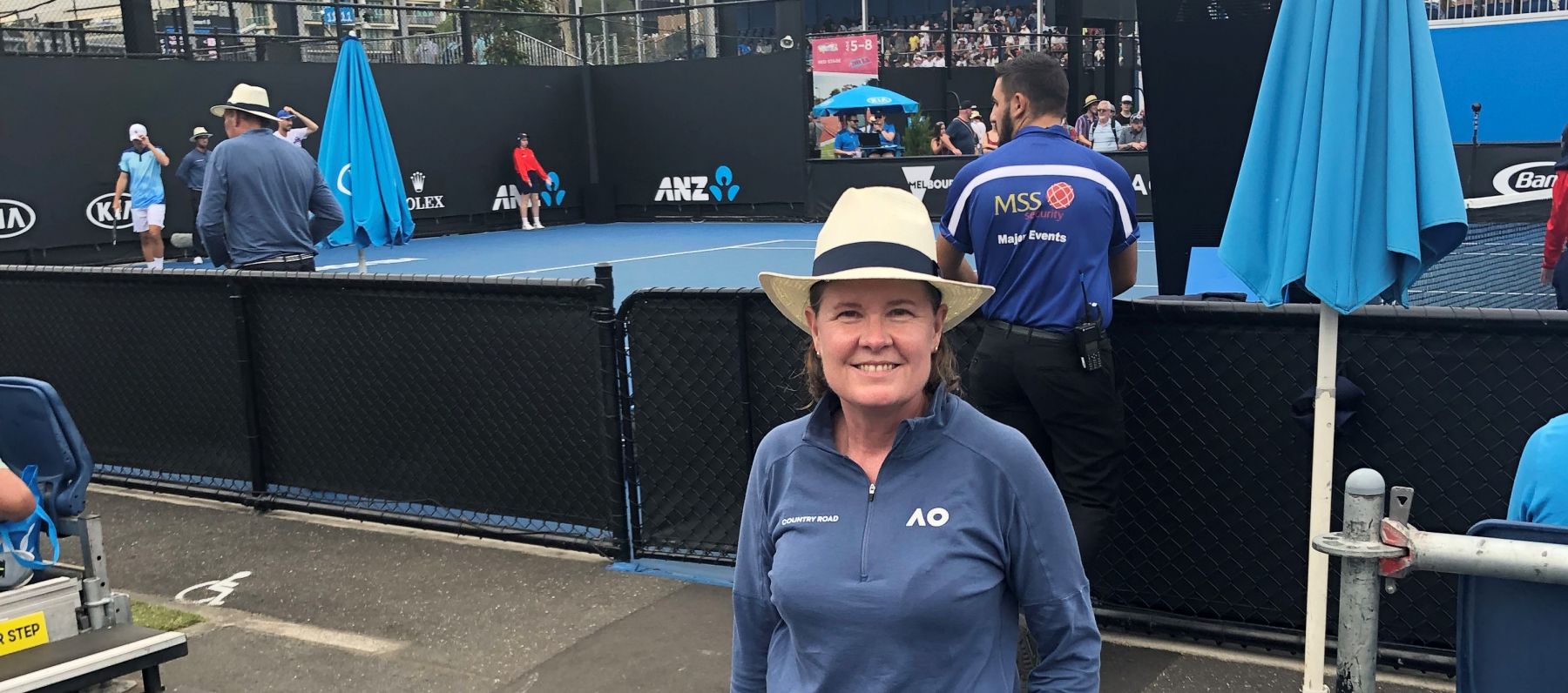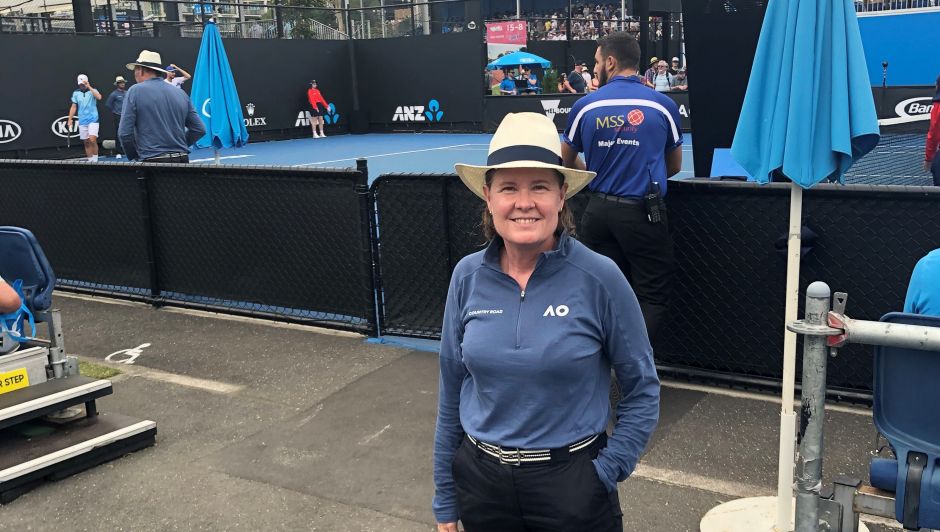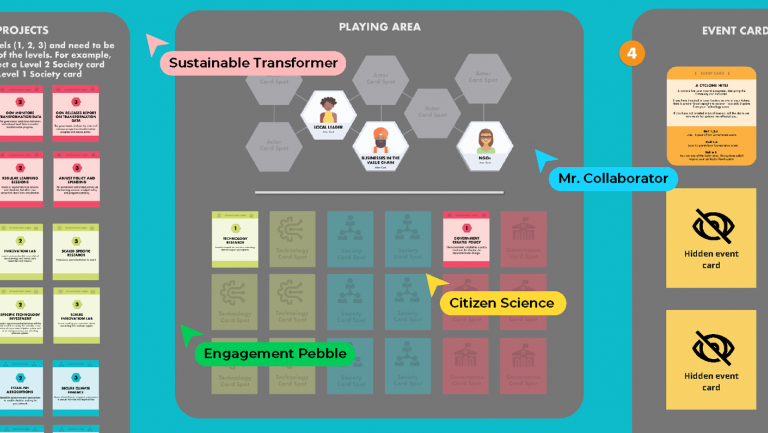Sign up for our monthly newsletter

Tennis lessons for design thinkers
In high performance culture the difference between success and failure can be a fine line.
Around five centimetres to be exact.
That’s the width of the lines at Melbourne Park where ThinkPlace Senior Executive Designer and Australian Open Grand Slam line judge Susan Atkinson is currently spending her days and nights.
At the other end of the court stands Reilly Opelka– at 213 cm he is the tallest man in world tennis and has one of the fastest serves. That ball is about to come hurtling at 225km/h towards the general direction of your face.
Your job is to decide whether it kissed the edge of that fine line or was out by a couple of millimetres.
Oh, and to get yourself out of the way.
“It can be pretty full on,” Atkinson says. “The other night I came into the match just after a colleague copped a ball in the face. It certainly concentrates the mind.”

Concentration is a quality that is needed in full supply. Not many think about the challenge of tennis umpiring. How difficult it is to focus intently on making decisions in the moment that can result in extreme consequences and serious scrutiny.
In the world of player challenges and video replays any error you make will be highlighted, televised, picked over and criticised.
“We have Hawkeye (ball tracking) on every court now,” Atkinson says. “The other day I called one out and the player challenged. I was wrong by 1mm. Then you see the result up on the screen and the whole crowd goes “ooohhhh” it takes a lot of mental strength to not be affected. You have to reset and remember it’s all about the next point, the next ball, the next line.”
A lifelong tennis lover, Atkinson only got into umpiring four years ago after leaving a successful career in the Australian Public Service. She joined ThinkPlace in 2016.
Without wanting to labour the point (so to speak) she sees plenty of parallels between her life as a tennis judge and some of the qualities needed to be a successful ThinkPlacer. And it goes beyond simply making the right calls under extreme pressure.
“At ThinkPlace we talk a lot about high performance culture,” she says. “It’s about finding the right people and equipping them to perform at their best in a way that is sustainable over time. That means going hard, recharging and then going again. Umpiring is a lot like that.
It’s also more collaborative than you’d think. There are 300 officials here from all over the world. In the locker room we are all helping each other out. This guys swings his serve out to the right so you might want to stand a little wider. This guy often foot faults on that side of the court. You are always learning and sharing what you’ve learned.”
Then there’s the idea of zoom, so central to the work we do designing in complex systems. A ThinkPlace designer must alternate between a view of the overall system and how actors within it relate to each other and then zoom in to a deeply human level of personal experience: how does an individual navigate and move through this system? What might their needs be?
“In line judging you need to have intense focus on the line,” she says. “You zoom in obsessively on this one thing. But you also need to maintain a sense of the whole court and the match. Who is standing where? What’s the score? What broader dynamics are in play?”
Before joining ThinkPlace Atkinson worked in the Department of Foreign Affairs and Trade and then the Australian Federal Police. At the Office for the Governor General she headed the team running the Order of Australia Awards and then spent eight years in Japan, part of it working for the Japanese foreign ministry.
Back in Australia she worked for 13 years at the Department of Immigration, heading up the UN section dealing with the UNHCR before finishing up at the Attorney General’s Department, where she led the team for countering violent extremism.
At ThinkPlace, she specialises in assisting clients with strategic communication, strategic planning and organisational design – with a focus on workplace culture.
She is currently completing a Masters Degree in Strategic Communications at University of Canberra.

“I’ve been lucky enough to have had a really interesting career but I love being at ThinkPlace,” she says. “The work is so varied and you get to spend every day surrounded by people who are so smart, so committed and so dedicated to making change in the world.”
Part of Atkinson’s focus is on applying the techniques of human-centred design and co-design that ThinkPlace uses every day to the area of strategic communications.
“Good communication is at the heart of successful organisations,” she says. “It’s related to organisational culture and culture change. You can’t do these things well if your communication is not at a high level.
And when you think about what we do with our clients - creating a design and then moving into the implementation of it - strategic communications is critical. It could be the greatest design in the world and still fail at the implementation phase because you can’t communicate it in the right way to the right people.”







